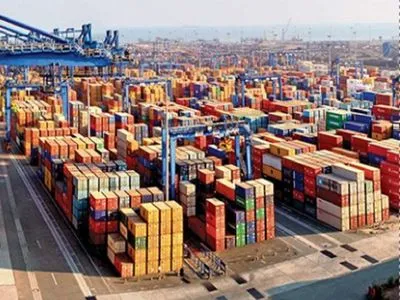
Indian Major Ports’ cargo grows 6% in September at 65 Mn MT
NEW DELHI : Central Government owned Indian Major Ports, registered a 6 per cent cargo growth in September at 65 million metric tonnes (mmt), primarily driven by crude oil cargo shipments and an increase in miscellaneous commodities.
The previous month saw a near 9 per cent increase in export-import (Exim) cargo and a 1.9 per cent fall in coastal cargo. Crude Oil and miscellaneous (other) commodities, which cumulatively account for a third of major port cargo, saw an increase of 9 per cent and 41 per cent respectively.
On the other hand, ahead of the festival season, the last month also saw private ports – or non-major ports – reversing their slow growth so far this fiscal, seeing a cargo growth of 10 per cent, with a 12 per cent increase in Exim cargo.
For major ports, containers, which are a proxy for trade of finished goods, grew only by 3 per cent in September as private ports took a large pie of festive shipments with a 26 per cent growth.
While crude oil volumes at non-major ports had been contracting throughout the financial year (FY25), September saw a sharp 20 per cent year-on-year rise in crude oil shipments, and experts opine that these volumes will continue to rise as crude oil cargo at private ports had been sluggish due to planned shutdowns in refineries of oil majors like BPCL Kochi, IOCL and Nayara Energy took planned shutdowns in this fiscal, which also impacted the petroleum product exports.
Major ports have so far in FY25 handled 414 million mmt of cargo, which is a 5 per cent increase compared to the last year. At this pace, they outpace their private peers growing at 4 per cent.
During the same period last year, major ports were on a slow growth trajectory with a 2.4 per cent growth in cargo, and over the last two years, the first half of the financial year has been fraught with international shipping challenges such as the Russia-Ukraine war, Israeli attacks across West Asia and the prominent emergence of Iran in the Israel-Palestine conflict.
In terms of port performance, traffic at Deendayal Port Authority (Kandla Port) grew by 28 per cent in September. Part of it is due to a low-base effect, as the port struggled with cargo in FY24 and lost its place as the biggest cargo-handling major Port to Odisha’s Paradip Port. So far in FY25, Kandla Port’s cargo handling has grown by 13 per cent.
Coastal cargo accounts for nearly a fourth of the total cargo volumes at major ports and almost a fifth at non-major ports. While the first half of the FY24 had seen a 20 per cent increase in coastal cargo at non-major ports, central government-owned ports had seen negligible growth.
In FY25, coastal cargo at major ports has grown by 4 per cent to 93 mmt, while it has decreased by 2 per cent to 65 mmt at non-major ports.
According to experts, the growth of coastal cargo at major ports can be majorly attributed to the coal evacuation from Paradip Port which handles close to 31 per cent of the coastal cargo amongst all with other ports like Chennai, Kamarajar port and even JNPA witnessing healthy growth, although the share in overall volumes remains low.
The Centre for Monitoring Indian Economy expects cargo movement at major ports to slow down to 3.1 per cent in the current fiscal year.
“A rise in traffic of major commodities such as petroleum, oil & lubricants (POL) and containerised cargo will push the overall growth upwards while a fall in traffic of coal and iron ore will restrict overall growth in 2024-25. Together, POL, coal, containerised cargo and iron ore account for over 77 per cent of the total cargo traffic,” it said earlier this month.
